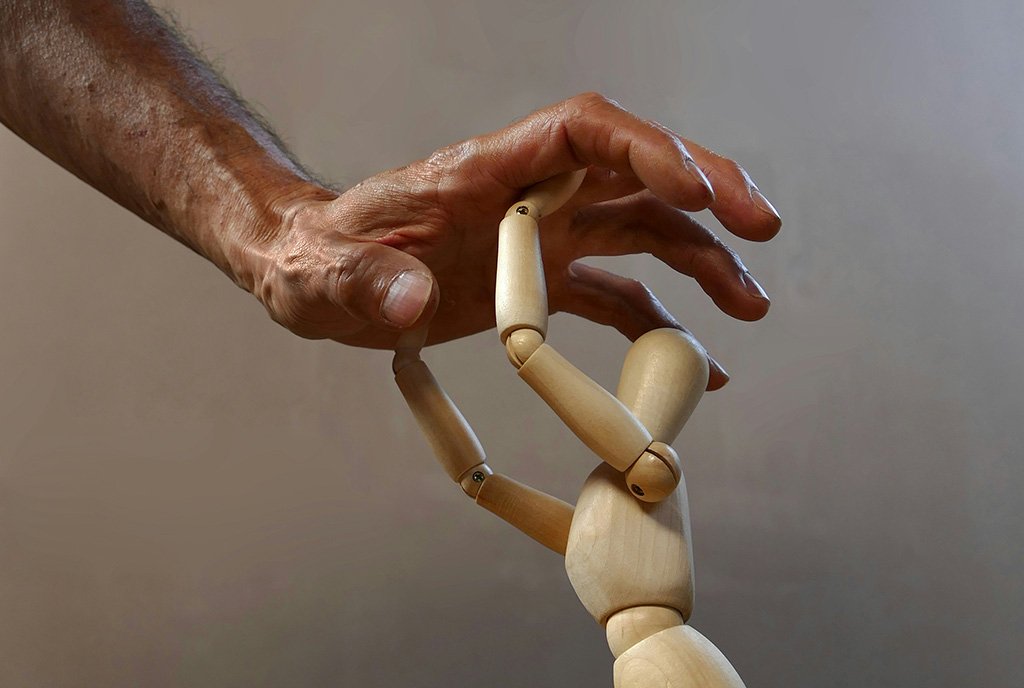
In anticipation of being threatened with defunding, PBS decided this past January to close their DEI office. In a statement they shared with NPR, they noted, “The staff members who served in that office are leaving PBS.”
PBS was not forced to act. The nonprofit faces financial risk, of course, as it receives 16 percent of its funding from the federal government. Nonetheless, it is unclear whether its action will protect the organization, as they have been targeted with defunding, on and off, for decades. But the move is a clear illustration of acceding to authority before receiving any government directive to do so. That is at the very heart of what it means to “obey in advance.”
While PBS provides a powerful example of how movements and nonprofits should not respond to the current moment, it raises the question: How should organizations respond?
Understanding the Dynamics
In On Tyranny: Twenty Lessons from the Twentieth Century, historian Timothy Snyder’s first lesson is “Do not obey in advance.”
He elaborates: “Most of the power of authoritarianism is freely given. In times like these, individuals think ahead about what a more repressive government will want, and then offer themselves without being asked.”
Obeying in advance means changing policies or curtailing advocacy, moving away from the full force of your mission, in advance of anyone ordering you to do so—in anticipation that something bad might happen. From there, people in authority learn what they can get away with.
“Do not obey in advance” is about asserting our power. Do not cower and make yourself small.
But while those five words may seem simple and straightforward, they can actually be rather confusing. That is because “do not obey in advance” tells us what not to do. But it doesn’t tell us what to do.
Why Negative Directives Are Hard to Follow
The reason it is important to reframe Timothy Snyder’s advice is rooted in the mechanics of how the human brain works, and specifically how our brains respond when gripped by fear.
When people feel threatened, the brain releases chemicals that reduce the capacity for reason and creativity. This chemical reaction allows for rapid response—escape the bear that is running toward us, for instance—and keeps the brain from wasting time and energy considering everything we’ve ever learned about bears. Those chemicals actually cut off access to the intellectual processing region in the brain’s frontal lobe. This is a good thing when it comes to protecting us from bear attacks, but less suitable to advancing nonprofit missions.
Another problem with the framing “do not obey” is that our brains struggle with the concept of not. As cognitive linguist George Lakoff noted in his book Don’t Think of an Elephant, when we’re instructed not to think of an elephant, suddenly that elephant is all we can think of. Lakoff reminds us that when Richard Nixon proclaimed, “I am not a crook,” what most Americans thought was actually, “He’s definitely a crook.”
“Do not obey in advance” is about asserting our power. Do not cower and make yourself small.
A group of scientists at New York University found that when we are told something is “not hot,” for example, we don’t picture it as cold; we picture it as less hot. Our brains process “not” as diminishing what that “not” is describing rather than eliminating it. Our brains therefore do much better with affirmative commands.
Building Positive Alternatives
If the goal is to not obey in advance, then what should we do? This isn’t a theoretical exercise for me. At my own organization, Creating the Future, we have been considering our positions regarding all sorts of issues that may arise in this new environment. The following are some thoughts on how all our nonprofits can step into their power:
Know the worst that could happen.
Anxiety and existential dread feel ubiquitous these days. One effective way to confront that fear is to ask, “What’s the worst that could happen?” for both sides of the equation. For example, if you are afraid of what might happen if you do not comply with the administration’s new mandates, you can ask yourself and/or your team the following questions:
- What’s the worst that could happen if we do not comply? And worst for whom? For you personally? For your organization? For your community?
- What’s the worst that could happen if we do comply? And worst for whom? Again: for you personally? For your organization? For your community?
This pair of questions makes explicit the often unspoken, nebulous fears that can lie just under the surface, helping your team members articulate what is underlying their anxiety.
The greatest strength your nonprofit has is not about your organization; it is about your community.
From there, you can more easily focus on which of those worst cases is truly worse, helping you determine which direction to take. With those fears brought into the light, you will have your best chance to take control of your next steps.
Know your values.
In its most simple definition, your organization’s values are about what is important to you. Those values are your moral boundaries, the lines your organization will not cross. Your values statement is then a commitment to the community of what they can expect from you.
Your values matter most when they are put to the test. And so, the first step in identifying how you will resist authoritarianism is to be crystal clear about those moral guidelines. What are the lines you will never cross?
If you have not discussed what your organization’s values look like in action, this is absolutely step one. Because everything else will depend on how you answer the question: “What is most important to us?”
Sign up for our free newsletters
Subscribe to NPQ's newsletters to have our top stories delivered directly to your inbox.
By signing up, you agree to our privacy policy and terms of use, and to receive messages from NPQ and our partners.
Know what you will say “yes” to and what you’re fighting for.
“Do not obey in advance” is about what you will say “no” to. “Yes” points you toward your vision for what is possible, aligning your actions with your values. “No” keeps you playing defense.
Like having a go bag in case of earthquake or fire, if you have predetermined steps that you will affirmatively take when big decisions arise, you can be confident that your decisions will be about staying strong and not simply “not obeying.”
Further, listing every possible lurking threat is an endless and emotionally debilitating task, putting you into fear mode. In that state, it is easy to just give in and stop fighting. When you list what you are fighting for, however, that list will likely be short and direct. Community. Health. Equity. Planet. That will energize you to fight for your vision and values—and your community.
Know who you are in solidarity with.
The greatest strength your nonprofit has is not about your organization; it is about your community. And that is not about getting your community members to help you; it’s about you helping them. It’s about acknowledging solidarity, that we are all in this together.
Answering the following questions can guide you to build that solidarity with all the people in your community who care about what you care about.
- Who will be affected by whatever we are considering?
- What would it take for them to (at least) be integrally involved in this decision, and (at best) to actually determine the direction we will take?
Everything else will depend on how you answer the question: “What is most important to us?”You are an asset for your community. And they are your strongest asset. When elected officials are flooded with so many constituents that a town hall is bursting at the seams, they will pay a lot more attention than when it is just your board president calling their office.
That is the power of identifying whose lives will be affected by this current situation. Meet them where they already are and fight alongside them.
Know reliable sources of information.
Rely on reliable sources whose job it is to fact check. And when you share that information, also share your sources. No matter how vigilant we are, each of us has shared something on social media that felt right but was actually wrong. When in doubt, refrain from using information you can’t verify.
Know what you will do if your work is in the line of fire.
Don’t wait until you are under attack. Prepare your team and your community members now.
Your organization may be directly in danger of losing federal funding like PBS—or worse. Organizations who are likely to be targeted by the administration know who they are, whether they are engaged in climate justice, racial justice, anti-genocide work, women’s rights, or other causes.
If you haven’t already done so, make your plans now. Focus them on what you will affirmatively do. Examples may include: “We will keep our community informed. We will build a huge coalition of support. We will find legal assistance now. If our tax exemption is threatened, here are the steps we will take.” You get the idea.
To ensure you are creating the most powerful plan possible, have the people who will be most affected (your community members) help craft that plan. The more we are all in this together, the stronger our work will be.
Know what your board will support.
Boards are famously risk averse, for a lot of reasons. Board members often do not understand the day-to-day workings of their organizations. They also may come from businesses or backgrounds where success actually relies on going along with problematic directives and not making waves. If you are a nonprofit leader and your board is hesitant, know what you will do about that. Have a plan for working with your board, and for what you will do if they stand in the way of doing the right thing.
Our Moment of Truth
This is a moment of truth for all progressive nonprofits. Keeping your head down and obeying may feel safe in the short term, but when you pick your head back up, you will find that nothing is as it was and you are facing even more hardship. Making yourself small is rarely a strong long-term strategy.
Your choice right now will be about who gets to decide the fate of your community. Not your organization, but your community. That is why you exist, and that is what is at stake.
Some of the items in this article will require courage. Some are just good practice. Start slow, and realize that the more you work alongside others, your courage will build.
Here’s the good news: Even if your nonprofit is not under attack, these approaches will provide rocket fuel for your mission. You will no longer be playing defense. You will be consistently creating what is possible, whether your work is currently under threat or not. Because the goal isn’t to defend against attack after attack; the goal is to create the humane, equitable, healthy community that is your reason for being.
For More on This Topic:
Warning Signs for Philanthropy: The Authoritarian Crackdown on Social Movements
Safety in Solidarity: How to Safeguard Movement Groups and Members
Resiliency Strategies for Nonprofits in Times of Political and Financial Instability











